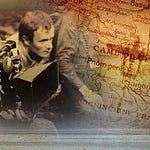They say all roads lead to Rome... but did you know one of them passes through a small village on the northern French coast?
In this episode, I take you to Wissant, where a new plaque reveals its link to the thousand-year-old Via Francigena, a historic pilgrimage route to Rome.
Explore French culture, history, and language. All in slow, clear French.
This …











